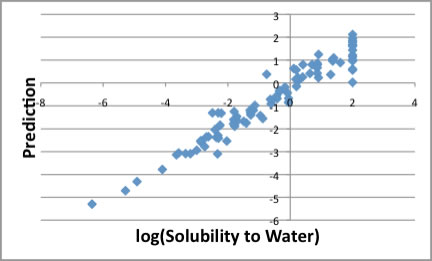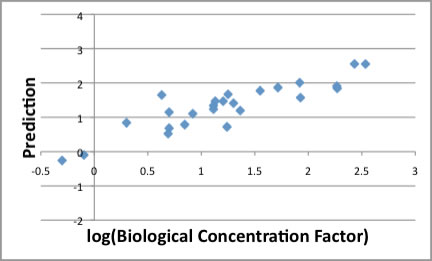HSP Application note #58
LogS Solubility to water, log(BCF:Biological concentration Factor)2010.11.11
HSPiP Team Senior Developer, Dr. Hiroshi Yamamoto
HSPiP(Hansen Solubility Parameters in Practice)The first edition of HSPiP that appeared in November, 2008, greatly enhanced the usefulness of the Hansen solubility parameters (HSP). The HSP values of over 1200++ chemicals and 500 polymers are provided in convenient electronic format and have been revised and updated using the latest data sources in the second edition (March, 2009). A third edition of the HSPiP appeared in March, 2010. There are now 10,000 compounds in the HSP file which also includes data on density, melting point, boiling point, critical parameters, Antoine constants and much more. The user is able to carry out many different sorts of optimisations of solubility, evaporation, diffusion, adhesion, create their own datasets (automatically if required) and explore the huge range of applications for HSP in coatings, paints, nanoparticles, cosmetics, pharma, organic photovoltaics and much more. The 3rd Edition v3.1 was released on 12 December 2010. Current users can upgrade free (now v3.1.09) by downloading the latest .msi installer from http://hansen-solubility.com The 4th Edition v4.0.x was released on 2 Jan. 2013. The Current users can upgrade with free charge. 2013.1.28 The Visual How to manual of HSPiP. You can understand what HSPiP can do. |
Smiles(Simplified Molecular Input Line Entry Syntax) SMILES is a string obtained by printing the symbol nodes encountered in a depth-first tree traversal of a chemical graph. Pirika JAVA Demo Applet getting Smiles. Draw2Smiles is available here. |
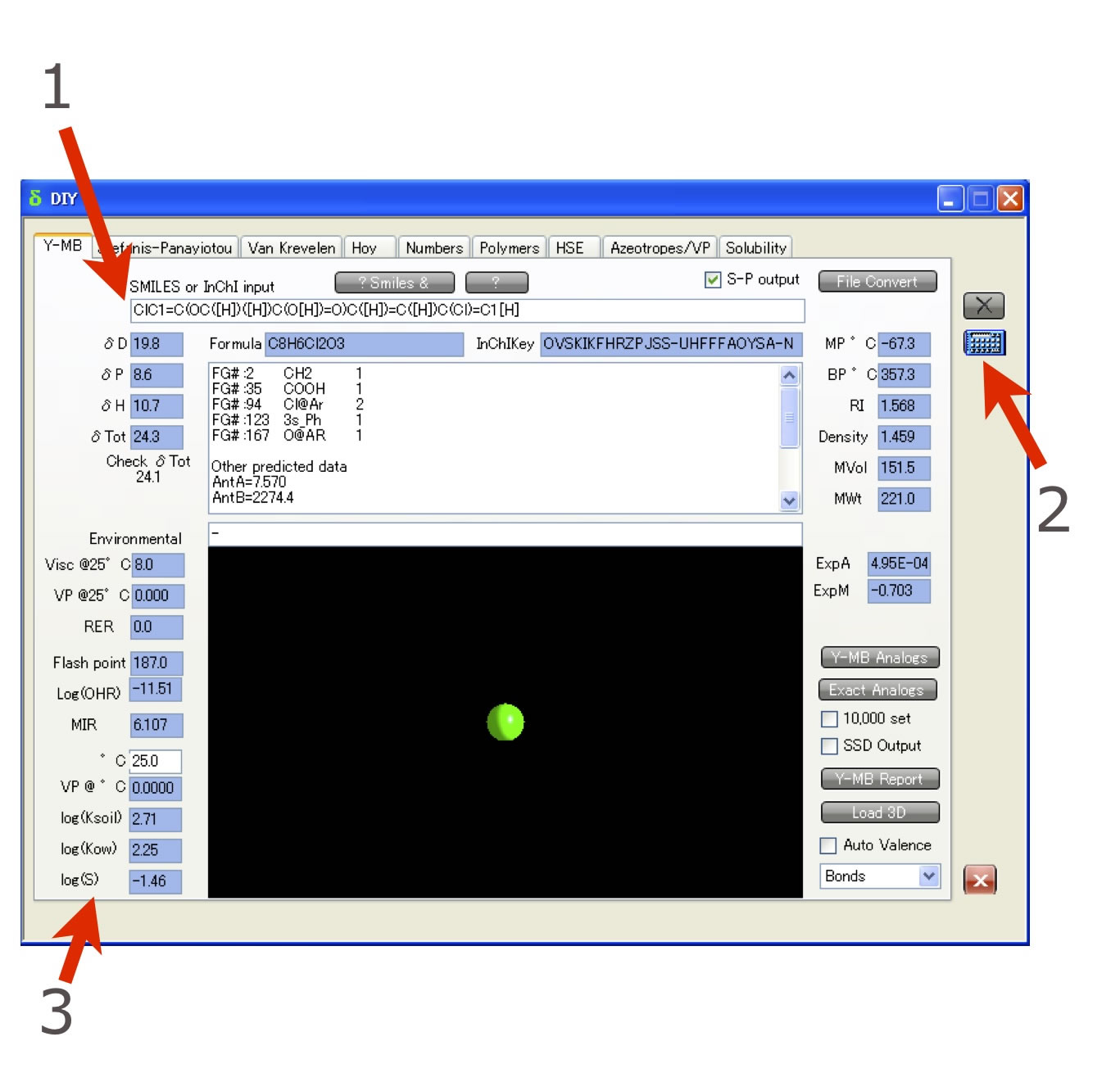
Just input Smiles structure in TextField
Push calculate button
Get result.
Program break molecule into functional groups and estimate properties.
Now I finished build new Y-MB ver. 3.1 and checking the accuracy.
The using compounds are same with hormonally active agents (endocrine disrupting chemicals)
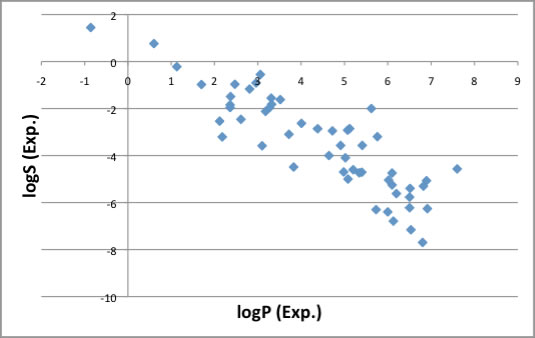
LogP and logS have relationship as showing above.
Large logP means small solubility to water.
But accuracy is not enough.
I checked Y-MB 3.1 performance.
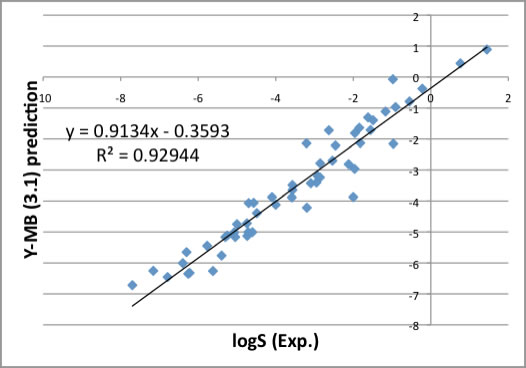
I can not say, the accuracy is good enough.
But from only structural data, we can predict logS.
I believe this result is better than nothing.
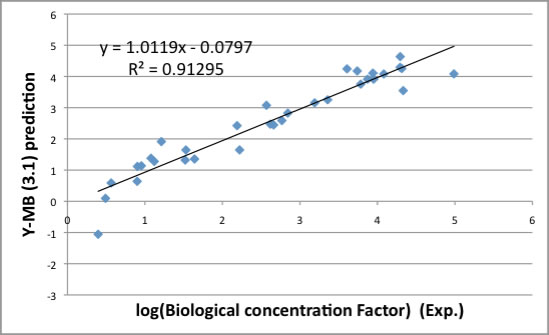
log(Biological concentration Factor) is also calculated by Y-MB. This index is also important from the environmental point of view.
For this purpose, I need compile more data to build more good model.
If you know the good resource about logBCF, please let me know.
2011.11.24
Volatile Organic Compounds (VOC) Prediction Result.
